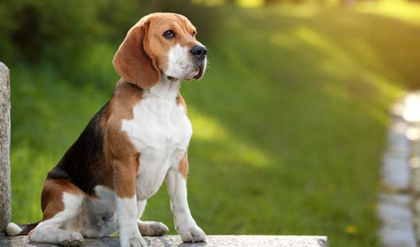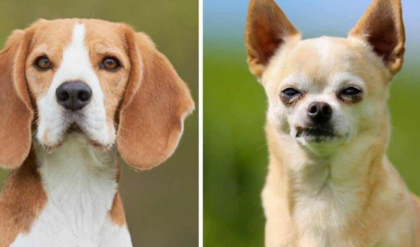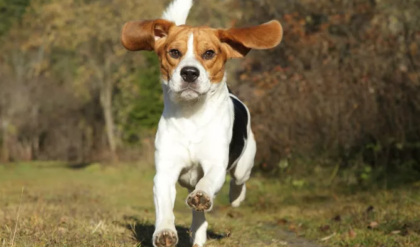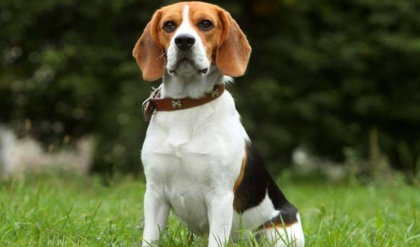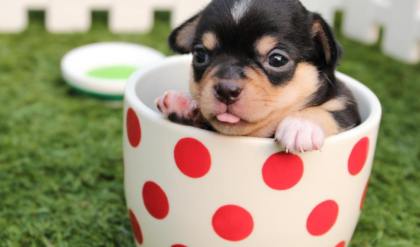Beagles are renowned for their friendly nature, keen sense of smell, and distinctive appearance. One of the most captivating aspects of these popular hounds is the variety of coat colors they can exhibit. This article delves into the top 10 standard types of beagle colors, exploring their unique characteristics, genetics, and recognition by various kennel clubs.

The Importance of Coat Color in Beagles
Coat color in beagles is more than just an aesthetic feature. It’s a reflection of the breed’s rich history and genetic diversity. While all beagles share the same lovable temperament and hunting instincts, their coat colors can vary significantly, creating a tapestry of canine beauty that has captivated dog lovers for generations.
The Genetic Basis of Beagle Coat Colors
Beagle coat colors are determined by a complex interplay of genes. These genes control the production and distribution of pigments in the dog’s fur, resulting in the wide array of colors and patterns we see today.
Dominant and Recessive Genes
The inheritance of coat colors in beagles involves both dominant and recessive genes. Some colors are more common because they are associated with dominant genes, while others are rarer due to their recessive nature.
The Role of Melanin
Melanin is the primary pigment responsible for coat color in beagles. Two types of melanin, eumelanin (black/brown pigment) and phaeomelanin (red/yellow pigment), combine in various ways to produce the diverse color palette seen in the breed.
Historical Significance of Beagle Colors
Traditionally, beagle colors played a crucial role in hunting. Different color combinations helped hunters distinguish their dogs in the field, especially in dense undergrowth or at a distance.
Evolution of Color Preferences
Over time, preferences for certain beagle colors have evolved. What was once prized for practical reasons in hunting may now be favored for aesthetic appeal in show rings or as family pets.
Kennel Club Recognition and Standards
Different kennel clubs around the world have their own standards regarding acceptable beagle colors. While some clubs are more lenient, others have strict guidelines about which color combinations are considered standard for the breed.
1. Black & Tan Beagle: The Classic Duo
The Black & Tan Beagle is a striking variation that showcases the breed’s elegance in a two-tone coat. This color combination is one of the most recognized and admired in the beagle world, with its rich contrast and bold markings.
Characteristics of the Black & Tan Coat
Black & Tan Beagles are characterized by their predominantly black coat with distinct tan markings. The black is usually deep and glossy, while the tan ranges from a warm reddish hue to a lighter fawn color.
Distribution of Colors
The tan markings typically appear on specific areas of the dog’s body, including the eyebrows, cheeks, chest, legs, and under the tail. This pattern creates a striking \masked\ find appealing.
Variations in Tan Shades
While the basic pattern remains consistent, the shade of tan can vary from dog to dog. Some Black & Tan Beagles have rich, deep tan markings, while others may display a lighter, more golden hue.
Genetic Factors Behind Black & Tan Coloration
The Black & Tan coloration in beagles is the result of specific genetic factors. Understanding these can provide insight into how this color pattern is inherited and expressed.
The Role of the Agouti Gene
The Agouti gene plays a crucial role in determining the distribution of black and tan pigments in a beagle’s coat. It controls the production of red and yellow pigments in specific areas of the body.

Inheritance Patterns
Black & Tan is often considered a recessive trait in beagles, meaning that both parents must carry the gene for it to be expressed in their offspring. This can make the color somewhat less common than some other variations.
Black & Tan Beagles in Competition
Many kennel clubs, including the American Kennel Club (AKC), recognize the Black & Tan color pattern as a standard for beagles. This recognition has implications for show dogs and breeding programs.
Show Ring Appeal
In the show ring, Black & Tan Beagles often stand out due to their striking contrast and clearly defined markings. Judges typically look for clear delineation between the black and tan areas and rich, even coloration.
Breeding Considerations
Breeders interested in producing Black & Tan Beagles must carefully consider the genetic background of their breeding stock. Understanding color inheritance can help predict the likelihood of producing puppies with this desirable coat pattern.
2. Black, Red & White Beagle: A Tricolor Treasure
The Black, Red & White Beagle is a stunning example of the breed’s color diversity, combining three distinct hues in a harmonious and eye-catching pattern. This tricolor variation is beloved by many beagle enthusiasts for its rich and vibrant appearance.
Understanding the Tricolor Pattern
The Black, Red & White Beagle’s coat is characterized by a specific distribution of colors that creates a distinctive and recognizable pattern.
Color Distribution
Typically, these beagles have a large black patch covering their back, sides, neck, and often extending to the tail. The red coloration appears as rich, warm patches, while white is usually present on the paws, chest, muzzle, and sometimes the tip of the tail.
Variations in Shade and Coverage
While the basic pattern remains consistent, individual dogs may show variations in the intensity of their red coloration and the extent of white markings. Some may have more prominent white areas, while others might display a deeper, more saturated red.
Genetic Basis of the Black, Red & White Combination
The tricolor pattern in beagles is the result of a complex interplay of genetic factors controlling pigment production and distribution.
Interaction of Pigment Genes
The combination of black, red, and white in a single coat involves multiple genes working together. The genes responsible for producing black (eumelanin) and red (phaeomelanin) pigments interact with genes controlling white spotting to create the tricolor effect.
Inheritance Patterns
The tricolor pattern is often dominant in beagles, meaning that a dog only needs to inherit the gene from one parent to display the coloration. This contributes to its relative frequency in the breed.
Black, Red & White Beagles in Breeding Programs
This color combination is highly valued in many breeding programs due to its popularity and striking appearance.
Desirability in Show Rings
Many kennel clubs recognize the Black, Red & White pattern as a standard color for beagles. In show rings, judges often appreciate the clear delineation between colors and the overall balance of the pattern.

Considerations for Breeders
Breeders focusing on this color combination must pay attention not only to color inheritance but also to maintaining the breed’s overall health and temperament standards. Responsible breeding practices ensure that color is not prioritized over other important traits.
Historical Significance of Tricolor Beagles
The tricolor pattern has a rich history in the beagle breed, dating back to its early development as a hunting dog.
Traditional Hunting Applications
Historically, the tricolor pattern was prized by hunters for its visibility in various terrains. The combination of dark and light colors made these dogs easier to spot in dense underbrush or at a distance.
Evolution of Color Preferences
Over time, as beagles transitioned from primarily working dogs to popular family pets and show animals, the aesthetic appeal of the tricolor pattern has become increasingly important to breeders and owners alike.
3. Black, Tan & Bluetick Beagle: A Unique Blend
The Black, Tan & Bluetick Beagle represents one of the more unusual and striking color combinations in the breed. This unique pattern combines the classic black and tan markings with the distinctive bluetick pattern, creating a truly eye-catching appearance.
Defining Characteristics of the Bluetick Pattern
The bluetick pattern is a hallmark feature of this color variation, setting it apart from other beagle color combinations.
Understanding Bluetick
The term \ refers to a pattern of black flecks or spots on a white background, which gives the appearance of a blue-gray coloration when viewed from a distance. In Black, Tan & Bluetick Beagles, this pattern is combined with the traditional black and tan markings.
Distribution of Colors
Typically, these beagles display the black and tan markings in the usual areas – black on the back and sides, with tan on the face, chest, and legs. The bluetick pattern often appears on the legs, chest, and sometimes parts of the face, creating a mottled or freckled effect.
Genetic Factors Behind the Bluetick Pattern
The bluetick pattern in beagles is the result of specific genetic factors interacting with the genes responsible for black and tan coloration.
Ticking Gene
The bluetick effect is caused by a gene known as the ticking gene. This gene causes spots or flecks of pigmented hair to appear on otherwise white areas of the coat.
Interaction with Other Color Genes
In Black, Tan & Bluetick Beagles, the ticking gene works in conjunction with the genes responsible for black and tan coloration, creating a complex and visually interesting coat pattern.
Recognition and Popularity
The Black, Tan & Bluetick color combination is recognized by several kennel clubs, including the Kennel Club in the United Kingdom.
Show Ring Considerations
In dog shows, this color variation can be particularly striking. Judges often look for clear definition between the different color areas and an even distribution of the bluetick pattern.

Growing Popularity Among Enthusiasts
While not as common as some other beagle color combinations, the Black, Tan & Bluetick pattern has been growing in popularity among beagle enthusiasts who appreciate its unique appearance.
Caring for Black, Tan & Bluetick Beagles
While the care requirements for these beagles are generally the same as for other color variations, there are some considerations specific to their coat.
Grooming Needs
The bluetick pattern can sometimes make dirt and debris less noticeable in the coat. Regular grooming is important to maintain the distinct pattern and overall coat health.
Sun Protection
As with all beagles, those with white areas in their coat may be more susceptible to sunburn. Owners should be mindful of sun exposure, particularly in areas where the bluetick pattern is prominent.
4. Tan & White Beagle: The Classic Combination
The Tan & White Beagle represents one of the most classic and recognizable color combinations in the breed. This timeless pattern has been a favorite among beagle enthusiasts for generations, embodying the quintessential beagle look that many people associate with the breed.
Characteristics of the Tan & White Coat
The Tan & White Beagle’s coat is characterized by its clean, crisp appearance and the harmonious blend of its two primary colors.
Color Distribution
Typically, these beagles have a predominantly white base coat with large tan patches. The tan areas often appear on the head, covering the ears and forming a \mask\d the face. Tan patches are also commonly found on the back, sides, and base of the tail.
Variations in Tan Shades
The shade of tan can vary significantly among individual dogs, ranging from a light fawn to a deep, rich reddish-brown. This variation adds depth and individuality to the Tan & White pattern.
Genetic Basis of Tan & White Coloration
The Tan & White color combination in beagles is the result of specific genetic factors that control pigment production and distribution.
White Spotting Gene
The white areas in a Tan & White Beagle’s coat are caused by a gene known as the white spotting gene. This gene effectively \turns off\ment production in certain areas of the coat.
Interaction with Tan Pigment Genes
The genes responsible for producing tan pigmentation (phaeomelanin) interact with the white spotting gene to create the characteristic Tan & White pattern.
Historical Significance of Tan & White Beagles
The Tan & White color combination has played a significant role in the beagle’s history, particularly in its development as a hunting dog.
Visibility in the Field
Historically, the high contrast between tan and white made these beagles easier for hunters to spot in various terrains, from dense forests to open fields.
Evolution as a Preferred Pattern
Over time, the Tan & White pattern has become one of the most popular and recognized beagle color combinations, both in the hunting field and in family homes.
Tan & White Beagles in Modern Breeding
Today, Tan & White Beagles continue to be a popular choice among breeders and pet owners alike.
Show Ring Presence
In conformation shows, Tan & White Beagles are often well-represented. Judges typically look for clear delineation between the tan and white areas and an overall balanced appearance.
Breeding Considerations
Breeders working with Tan & White Beagles must consider not only color inheritance but also other important breed characteristics such as health, temperament, and conformation to breed standards.
5. Black, White & Tan Beagle: The Tricolor Classic
The Black, White & Tan Beagle, often simply referred to as the \color\ beagle, is perhaps the most iconic and widely recognized color pattern in the breed. This classic combination of three distinct colors creates a striking and balanced appearance that has long been associated with the quintessential beagle look.
Understanding the Tricolor Pattern
The Black, White & Tan pattern in beagles is characterized by its distinct distribution of colors, creating a harmonious and visually appealing coat.
Color Distribution
Typically, these beagles have a white base coat with large black areas covering the back, sides, and often forming a \ket\ \ddle.\ Tan markings appear in specific areas, usually on the face, chest, legs, and under the tail, creating a distinctive masked appearance.
Variations in Pattern
While the basic tricolor pattern remains consistent, individual dogs may show variations in the size and shape of their black patches and the intensity of their tan markings. Some may have more prominent white areas, while others might display a larger proportion of black.
Genetic Factors Behind the Tricolor Coat
The tricolor pattern in beagles is the result of a complex interplay of genetic factors controlling pigment production and distribution.
Interaction of Multiple Genes
The combination of black, white, and tan in a single coat involves several genes working together. These include genes responsible for producing black (eumelanin) and tan (phaeomelanin) pigments, as well as genes controlling white spotting.
Inheritance Patterns
The tricolor pattern is often dominant in beagles, meaning that a dog only needs to inherit the gene from one parent to display the coloration. This contributes to its prevalence in the breed.
Historical Significance of Tricolor Beagles
The tricolor pattern has played a significant role in the beagle’s history, particularly in its development and use as a hunting dog.
Traditional Hunting Applications
Historically, the tricolor pattern was highly valued by hunters for its visibility in various terrains. The combination of dark and light colors made these dogs easier to spot in dense underbrush or at a distance.
Evolution as a Breed Standard
Over time, the tricolor pattern has become deeply associated with the beagle breed, often being depicted in art, literature, and popular media as the \typical\ appearance.
Tricolor Beagles in Modern Breeding and Shows
Today, tricolor beagles continue to be a popular choice among breeders, show enthusiasts, and pet owners.
Show Ring Appeal
In conformation shows, tricolor beagles are often well-represented. Judges typically look for clear delineation between colors, balanced distribution of markings, and overall adherence to breed standards.
Breeding Considerations
Breeders working with tricolor beagles must consider not only color inheritance but also other important breed characteristics such as health, temperament, and conformation to breed standards.
6. Brown & White Beagle: A Warm and Welcoming Coat
The Brown & White Beagle presents a warm and inviting color combination that has gained popularity among beagle enthusiasts. This color variation showcases the breed’s gentle nature and friendly appearance, making it a favorite for both show rings and family homes.
Characteristics of the Brown & White Coat
The Brown & White Beagle’s coat is distinguished by its rich, earthy tones combined with crisp white areas, creating a pleasing contrast.
Color Distribution
Typically, these beagles have a white base coat with large brown patches. The brown areas often appear on the head, covering the ears and forming a \ around the face. Brown patches are also commonly found on the back, sides, and base of the tail.
Variations in Brown Shades
The shade of brown can vary significantly among individual dogs, ranging from a light tan to a deep, rich chocolate. This variation adds depth and individuality to the Brown & White pattern.
Understanding \Cockroaches\ Brown & White Beagles
A unique feature of many Brown & White Beagles is the presence of \roaches,\ which are darker markings on the back and tail.
Definition of Cockroaches
Cockroaches are areas of darker brown or black hair interspersed within the lighter brown areas of the coat. They typically appear along the back and on the tail, creating a subtle mottled or speckled effect.The Brown & White Beagle presents a warm and inviting color combination that has gained popularity among beagle enthusiasts. This color variation showcases the breed’s gentle nature and friendly appearance, making it a favorite for both show rings and family homes.
Characteristics of the Brown & White Coat
The Brown & White Beagle’s coat is distinguished by its rich, earthy tones combined with crisp white areas, creating a pleasing contrast.
Color Distribution
Brown & White Beagles typically have a white base coat with large brown patches. The brown areas often appear on the head, covering the ears and forming a mask around the face. Brown patches are also commonly found on the back, sides, and base of the tail. This distribution of colors creates a harmonious blend that highlights the unique features of the breed.
Variations in Brown Shades
One of the charming aspects of Brown & White Beagles is the variation in brown shades seen among individual dogs. Some may have a light tan hue, reminiscent of caramel, while others exhibit a deep, rich chocolate color. This variability adds depth and character to the coat pattern, making each dog visually distinct. Breeders and enthusiasts appreciate the range of brown shades within the Brown & White Beagle population, as it contributes to the overall appeal of the breed.
Understanding “Cockroaches” in Brown & White Beagles
A unique feature of many Brown & White Beagles is the presence of “cockroaches,” which are darker markings on the back and tail.
Definition of Cockroaches
In the context of Brown & White Beagles, cockroaches refer to areas of darker brown or black hair interspersed within the lighter brown sections of the coat. These markings typically manifest along the back and on the tail, creating a subtle mottled or speckled effect. Cockroaches add an interesting visual element to the coat pattern, breaking up the solid brown areas with contrasting darker accents. While not present in all Brown & White Beagles, cockroaches are a distinctive trait that sets certain individuals apart within the breed.
Significance of Cockroaches
Cockroaches are often prized by breeders and enthusiasts for their aesthetic appeal and uniqueness. They can enhance the overall appearance of a Brown & White Beagle, giving the coat texture and dimension. When well-defined and strategically placed, cockroaches contribute to the dog’s visual interest and may catch the eye of judges in conformation shows. Breeders may selectively breed for the presence of cockroaches in their lines to maintain this desirable trait in future generations. Overall, cockroaches add a touch of character to the classic Brown & White coat pattern, further distinguishing these beagles in the canine world.
Brown & White Beagle: A Warm and Welcoming Coat
The Brown & White Beagle is a beloved variation of the breed, known for its friendly demeanor and attractive color combination. This coat pattern has captured the hearts of many beagle enthusiasts, whether they are involved in show competitions or simply looking for a loyal companion.
Characteristics of the Brown & White Coat
The hallmark of the Brown & White Beagle is its warm and inviting coat colors, which blend rich browns with crisp whites to create a striking appearance.
Color Distribution
Brown & White Beagles typically have a predominantly white base coat adorned with large brown patches. These brown areas are commonly seen on the head, covering the ears and forming a distinctive mask around the face. Additionally, brown patches can be found on the back, sides, and the base of the tail, adding depth and contrast to the overall coat pattern. The distribution of colors is carefully balanced to showcase the unique features of the breed while maintaining a harmonious look.
Variations in Brown Shades
One of the charming aspects of the Brown & White Beagle is the wide range of brown shades that can be observed among individual dogs. Some may exhibit a light tan hue, reminiscent of caramel or honey, while others display a deep, luxurious chocolate color. This variability in brown shades adds character and individuality to each dog, making them visually distinct and appealing to admirers of the breed. Breeders often appreciate the diversity in brown tones within the Brown & White population, as it contributes to the overall charm of these beagles.
Understanding “Cockroaches” in Brown & White Beagles
A notable feature of many Brown & White Beagles is the presence of “cockroaches,” which are darker markings that appear on the back and tail of the dog’s coat.
Definition of Cockroaches
In the context of Brown & White Beagles, cockroaches refer to areas of darker brown or black hair that are interspersed within the lighter brown sections of the coat. These markings typically manifest along the back and on the tail, creating a subtle mottled or speckled effect that adds visual interest to the overall coat pattern. While not all Brown & White Beagles exhibit cockroaches, they are considered a distinctive trait that sets certain individuals apart within the breed.
Significance of Cockroaches
Cockroaches are often prized by breeders and enthusiasts for their aesthetic appeal and unique appearance. These darker markings can enhance the overall look of a Brown & White Beagle, providing texture and dimension to the coat. When well-defined and strategically placed, cockroaches can catch the eye of judges in conformation shows, showcasing the dog’s individuality and charm. Some breeders may selectively breed for the presence of cockroaches in their lines to maintain this desirable trait in future generations. Overall, cockroaches contribute to the classic appeal of the Brown & White coat pattern, adding a touch of character and elegance to these beloved beagles.
Conclusion
In conclusion, the coat colors and patterns of beagles play a significant role in defining the breed’s appearance and personality. From the classic tricolors to the warm and welcoming Brown & White variations, each coat pattern brings its own charm and appeal to these beloved dogs. Whether in the show ring, out hunting, or lounging at home, beagles with their distinctive coats continue to capture the hearts of dog lovers around the world. By understanding the characteristics and significance of different coat patterns, we can deepen our appreciation for the beauty and diversity of beagles as a breed. Whether you prefer the timeless elegance of a tricolor beagle or the inviting warmth of a Brown & White companion, one thing is certain – the coat does not just make the dog, but it certainly adds to their undeniable charm and charisma.

